George Allan 2014
All rights reserved. No reproduction, copy or transmission of this publication may be made without written permission.
No portion of this publication may be reproduced, copied or transmitted save with written permission or in accordance with the provisions of the Copyright, Designs and Patents Act 1988, or under the terms of any licence permitting limited copying issued by the Copyright Licensing Agency, Saffron House, 6-10 Kirby Street, London EC1N 8TS.
Any person who does any unauthorized act in relation to this publication may be liable to criminal prosecution and civil claims for damages.
The author has asserted his right to be identified as the author of this work in accordance with the Copyright, Designs and Patents Act 1988.
First published 2014 by
PALGRAVE MACMILLAN
Palgrave Macmillan in the UK is an imprint of Macmillan Publishers Limited, registered in England, company number 785998, of Houndmills, Basingstoke, Hampshire RG21 6XS.
Palgrave Macmillan in the US is a division of St Martins Press LLC, 175 Fifth Avenue, New York, NY 10010.
Palgrave Macmillan is the global academic imprint of the above companies and has companies and representatives throughout the world.
Palgrave and Macmillan are registered trademarks in the United States, the United Kingdom, Europe and other countries
ISBN: 9781137278043
This book is printed on paper suitable for recycling and made from fully managed and sustained forest sources. Logging, pulping and manufacturing processes are expected to conform to the environmental regulations of the country of origin.
A catalogue record for this book is available from the British Library.
A catalog record for this book is available from the Library of Congress.
Typeset by Cambrian Typesetters, Camberley, Surrey
Printed in China
Introduction
Who is this book for?
From self-help books to academic papers, from texts exploring social policy to memoirs recounting experiences of substance use, drugs, alcohol and tobacco have a rich and varied literature. Where does this book fit in? As awareness has grown that substance problems permeate the caseloads of all social and health practitioners, so has the need to ensure that accessible guides to practice are available. This book has been written for all who come in contact with people with substance problems in their working lives social workers, probation officers, support workers, psychologists, health practitioners, youth workers and the like. Although practitioners in these various professional roles will approach people experiencing difficulties from different perspectives, the knowledge and skills needed to intervene effectively are the same for all. Practice is similar in the various countries that make up the United Kingdom but there are legislative and policy differences. To ensure its relevance throughout the UK and beyond, the material has not been tied too closely to any one country. The book has been written for practitioners and for undergraduate and postgraduate students undertaking specialist modules. However, it is hoped that it will also be read by some people experiencing problems themselves, or their relatives, to help shed light on what engaging with treatment entails and to give them hope that their lives can change for the better.
What does this book cover?
Practitioners will be most interested in the application of effective interventions. However, it is difficult to make sense of these without a grounding in the theories as to why people develop problems and an understanding of the wider social and cultural contexts which shape substance use, both harm free and problematic. This book tries to do justice to these themes. It is divided into three sections:
 Context and theory
Context and theory. cover information about substances, the nature of problematic use, theories as to why people experience difficulties, the cultural setting and methods of control, and perspectives on why people change.
 Interventions in practice
Interventions in practice. reduction, CBT, pharmacotherapy, mutual aid groups and working with stimulant users are described.
 Specific populations
Specific populations. This section, , considers the implications of problematic use for other people, both adults and children. It also addresses working with people with co-occurring psychological distress and substance use, adolescents and involuntary service users, including offenders.
While it might be desirable for readers to work through the book from start to finish, it is acknowledged that busy practitioners and students tend to seek out information as the situation demands. To this end, an effort has been made to present the material in an accessible way. Given the often complex and ambiguous nature of research findings, this has been a challenge. I hope I have done justice to the work of others.
Much is known about substances and their use but a great deal continues to perplex us too. Disagreements continue to rage as to why people develop problems, what the outcomes of treatment should be and how best to help people. To an outsider, the substance problems field must sometimes seem to be populated by warring tribes! Controversial issues, such as controlled drinking and the meaning of recovery, are addressed. The book is not, however, a polemic and the reader is encouraged to consider the evidence before drawing conclusions.
This book is about addiction, but it is not only about addiction; substance problems occur in many forms.
Terminology and case studies
Clarification of the terminology used is needed.

Practitioner is used to describe anyone working in a formal capacity with a person with a substance problem or his/her relatives.

Service user denotes any person who is involved in treatment.

Substances and drugs are terms used synonymously, except when the latter is employed to differentiate other psychoactive substances from alcohol and tobacco.

Interventions and treatment are used interchangeably.

Substances are no respecters of gender. In recognition of this, he and she are used in alternate chapters, except where gender-specific issues are being addressed.
Some of the case studies are fictitious and some are based on real, but anonymized, scenarios. The introduction of I or a colleague differentiates the latter from the former.
A plea
Historically, many professional groups and their associated training courses paid little heed to substance issues. This is changing very much for the better. What is lacking, however, are opportunities to practise the hands-on skills needed before engaging with people experiencing difficulties. This book comes, therefore, with an appeal to course organisers and those designing undergraduate and post-qualifying training to build in significant space for rehearsing assessment, motivational interviewing, relapse prevention and the other skills essential to effective engagement. Proficiency only comes with practice supported by skilled mentors.


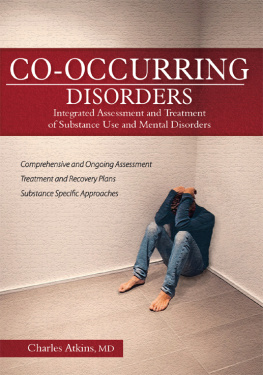
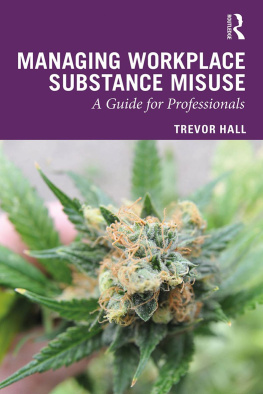
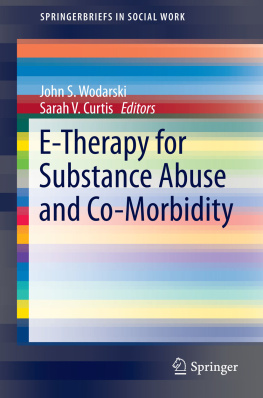
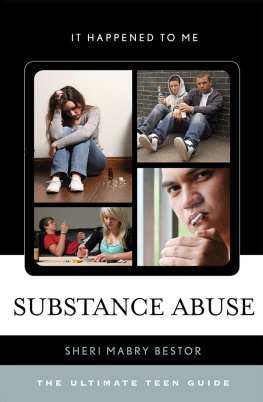
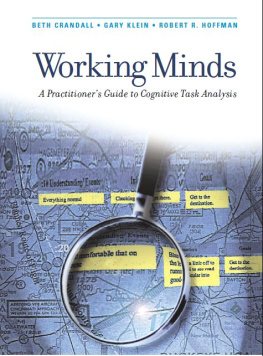


 Context and theory. cover information about substances, the nature of problematic use, theories as to why people experience difficulties, the cultural setting and methods of control, and perspectives on why people change.
Context and theory. cover information about substances, the nature of problematic use, theories as to why people experience difficulties, the cultural setting and methods of control, and perspectives on why people change.